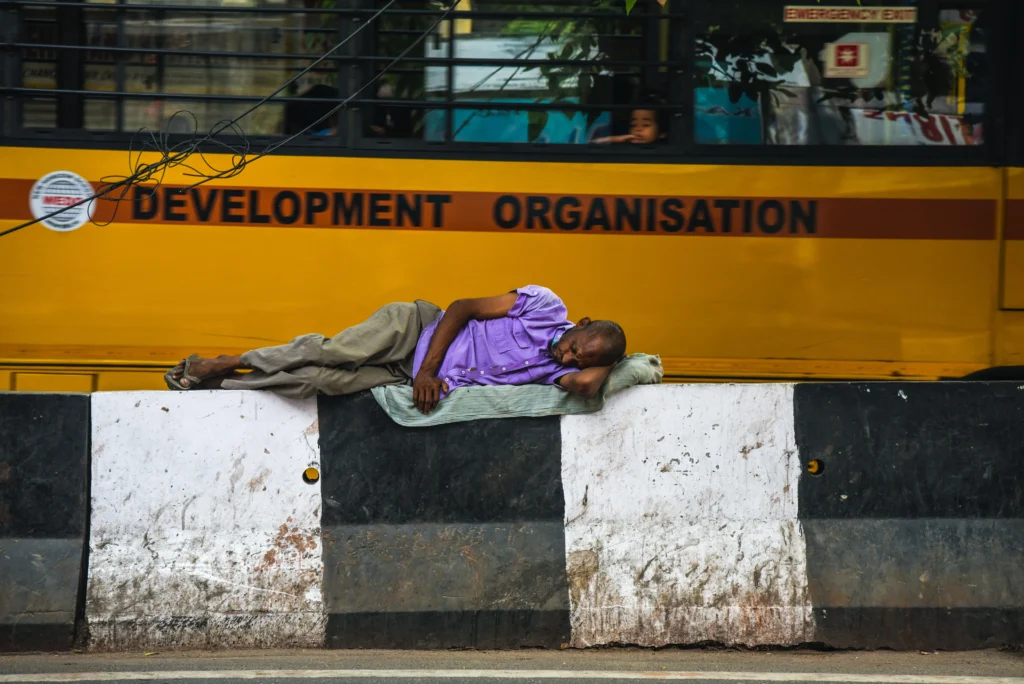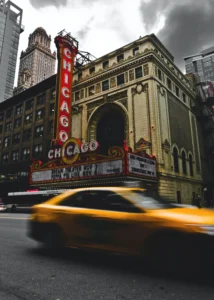Street Photography has been capturing candid moments in urban life for decades but is still a less-known and misunderstood genre of photography. It is an art that requires spontaneity, creativity, and the ability to tell stories through images. In this article, we’ll talk about the history, techniques, equipment, and ethical considerations required for Street photography.

What is Street Photography?
It is a form of photography that focuses on capturing everyday life in public spaces. The photographer usually tries to capture unposed, candid, and spontaneous moments. The main aim of a street photographer is to capture the human experience in all its diversity, capturing the soul of a city or a community through its people, architecture, and urban landscapes. Photographer seeks to show the beauty, complexity, and authenticity of human existence through images.
A Glimpse into History
With the introduction of handheld cameras in the early 20th century, pioneers like Henri Cartier-Bresson, Robert Doisneau, and Walker Evans introduced a new format of photography that documented the daily events like the life of farmers or factory workers and historical events like the death of Mahatma Gandhi, etc. These early practitioners laid a foundation stone for Street Photography.
Street photography played a significant role in documenting social and cultural changes throughout history, from the Great Depression in the United States to the post-war reconstruction of Europe. It continues till date as more and more photographers are adopting this form of photography and contributing in capturing the major events of history in writing.
Techniques and Equipment
Camera
Street photographers opt for a range of cameras to suit their individual preferences and shooting styles. While some chose compact mirrorless cameras which are popular due to their portability others chose DSLRs for their versatility in challenging lighting situations. Ultimately, the choice of camera depends on the photographer’s comfort and the type of storytelling he/she wishes to capture through it.
Camera Lens
Street photographers rely on a wide range of lenses depending on the scene and lighting of the place of photography. Various types of lenses used for Street Photography are:
1. Prime Lens :
A prime lens, such as a 35mm or 50mm, is a popular choice as it provides excellent low-light performance and a natural field of view, making it ideal for candid shots. Prime Lens is mainly used to capture a landscape of local events like street artists, street fairs, beach markets, and many more.
2. Wide-angle lens :
Wide-angle lenses, like 28mm or 24mm, are used for immersive, context-rich compositions as they allow the photographer to capture a wider area. Wide Angle Lenses can be used when a photographer does not wish to crop out the scene and wants to cover a wider field of view like a live protest or crowd at a concert.
3. Telephoto lens :
A telephoto lens like 135mm or above, is the least preferred choice of a street photographer. However, some use it to capture distant subjects.
Framing and Composition
The aim of a street photographer is to draw the viewer’s attention to the scene of action so that the viewer understands the story the photographer is trying to tell. Image composition and framing play an important role in this. Street photographers focus on elements like leading lines and the rule of thirds to create visually compelling images.
Related Post: What is The Rule Of Thirds ?
Timing and Patience
Capturing the right moment is the key to a good Street Photograph. To become a successful street photographer, you need to excel in the sense of timing. You have to learn to wait for that split second when all elements align themselves to create a perfect image.
Ethics in Street Photography
While the world is the oyster for a street photographer, some common ethical considerations must be taken into account while doing street photography. A street photographer must have the answers to the following questions at all times while shooting in public spaces.
a. Consent: Do you need permission to photograph strangers in public places?
b. Invasion of privacy: How close is too close when taking candid shots?
c. Exploitation: Are you exploiting the subjects for your own gain?
d. Respect and empathy: How should you treat the people you photograph?
A street photographer must show respect for the subjects’ privacy and dignity. The subject’s consent is imperative. While it is generally legal to photograph people in public spaces, it’s important to exercise sensitivity and to be aware of cultural norms and legal regulations, which can vary by location.
Challenges in Street Photography
Street Photographers face many challenges while shooting in public such as:
Fear of Confrontation: The prospect of being confronted by subjects or passersby can be intimidating. Developing confidence and communication skills is crucial.
Finding Unique Perspectives: Even familiar streets can yield fresh perspectives when viewed through the lens of a street photographer. It’s about honing the ability to see the extraordinary in the ordinary.
Conclusion
From the pages of daily journals to the posts on Instagram, the art of Street Photography has maintained its glory. With more and more photographers indulging in Street photography, it is important to understand the art of storytelling through creativity, technical skill, and an understanding of the ethical and legal aspects. With a little practice, one can learn to navigate through the complexities of this genre. A street photographer can create compelling narratives that resonate with viewers and enrich the visual storytelling landscape. So, pick up your camera, hit the pavement, and let the world unfurl before your lens.







[…] The Art Of Street Photography: Everything You Want To Know […]